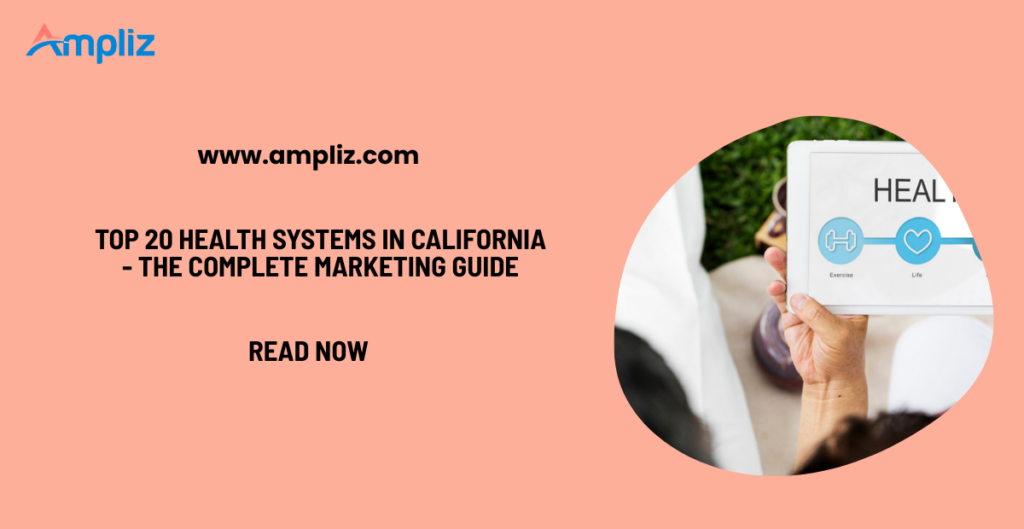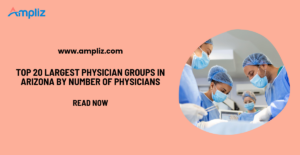Introduction — why California health systems matter?
California is home to some of the largest, most influential and fastest-evolving health systems in the United States. From integrated delivery networks that combine insurance, hospitals and ambulatory care to academic medical systems powering complex specialty care, California’s health systems shape clinical standards, purchasing cycles, and regional referral patterns. If you sell medical devices, digital health platforms, pharma services, or revenue-cycle solutions, winning strategic accounts in California can move the needle for national traction: these systems control large purchasing budgets, have concentrated decision-making groups (supply chain, clinical engineering, informatics, and purchasing), and serve massive patient populations that drive procurement priorities.
We provides an authoritative Top 20 list (ranked by commonly used industry metrics such as staffed beds and revenue where available), explains the landscape and concentration of power, answers the simple question “how many largest health systems are there in California?”, and finishes with a step-by-step marketing playbook for reaching them using Ampliz healthcare data intelligence.
Top 20 Health Systems in California
| Rank | Health System | HQ / Major Base | Notes (beds / scope / revenue snapshot) |
|---|---|---|---|
| 1 | Kaiser Permanente | Oakland / Oakland-based integrated system | Largest integrated system in CA by revenue and members; massive bed & clinic footprint; 2024 revenue among the largest in US. |
| 2 | University of California Health (UC Health) | Oakland / system-wide across CA UC campuses | Academic health system comprising UC medical centers (UCLA, UCSF, UCSD, etc.), major tertiary centers and research programs. |
| 3 | CommonSpirit Health (including Dignity legacy) | Nationwide; significant CA footprint | Large nonprofit system formed by mergers; substantial California hospital presence following Dignity Health integration. Definitive Healthcare |
| 4 | Sutter Health | Sacramento | Major Northern California system with many hospitals and ambulatory sites. |
| 5 | Providence (Providence St. Joseph) | Renton, WA | Large not-for-profit system with significant CA hospitals and specialty centers. |
| 6 | Cedars-Sinai Health System | Los Angeles | Flagship academic medical center (Cedars-Sinai Medical Center) with high net patient revenue and research programs. |
| 7 | Stanford Health Care / Stanford Medicine | Palo Alto / Stanford | Academic medical center and health system with leading research and specialty services. |
| 8 | Scripps Health | San Diego | Regional integrated system with hospitals and outpatient network in Southern California. |
| 9 | Sharp HealthCare | San Diego | Prominent San Diego health system with multiple hospitals and outpatient services. |
| 10 | Dignity Health (CommonSpirit legacy) | Sacramento / San Francisco roots | Historically large California nonprofit before/after CommonSpirit merger activities. |
| 11 | Tenet Health (CA hospitals) | Dallas (national) with CA hospitals | For-profit operator with notable California acute-care hospitals. |
| 12 | HCA Healthcare (CA presence) | Nashville (national) | National for-profit with several high-volume Southern California hospitals. |
| 13 | AdventHealth (CA presence via acquisitions) | Orlando (national) | Growing presence in CA markets through recent expansions and partnerships. |
| 14 | Kaleida / regional systems & independent academic centers | Various | Includes major independent academic hospitals and regionals. |
| 15 | Sutter-affiliated regional networks | Northern CA | Sub-networks and foundations that expand Sutter’s reach. |
| 16 | UC-affiliated medical groups (e.g., UCLA Health) | Los Angeles | Large academic clinical networks under UC umbrella. |
| 17 | MemorialCare Health System | Long Beach / Orange County | Important regional nonprofit health system in SoCal. |
| 18 | Pomona / regional IDNs | Inland Empire | Fast-growing regional systems with growing procurement budgets. |
| 19 | Children’s Hospital systems (e.g., CHLA, UCSF Benioff Children’s) | Los Angeles / San Francisco | Pediatric tertiary centers with specialized buying needs. |
| 20 | Regional community systems & integrated physician groups | Statewide | Includes many mid-size systems that collectively purchase at scale. |
How many largest health systems are there in California?
If by “largest” you mean health systems with sizeable enterprise footprints (multi-hospital, multi-affiliate networks), there are dozens — more than 100 registered hospital systems and networks when including smaller regional operators and physician-led networks. Industry directories list 100+ systems operating in California, while the meaningful “largest” cohort (those controlling hundreds of beds or billions in operating revenue) narrows to roughly 20–30 organizations that shape statewide procurement trends. For this post we focus on the Top 20 that matter most for enterprise marketing and sales.
Deep-dive: business implications of the Top-tier systems
- Procurement scale and cycles: Large systems run enterprise procurement with multi-year RFPs and preferred-vendor programs. A single system-level contract can trigger rollouts across dozens of hospitals and clinics — high value, but competitive procurement.
- Integrated care & data needs: Systems like Kaiser and UC Health emphasize integrated EHR, population health, and analytics — creating demand for data interoperability, clinical decision support, and SaaS solutions.
- Innovation hubs in academic centers: Stanford, UCLA, UCSF and Cedars-Sinai act as early adopters for complex devices and clinical trials; work with their innovation or commercialization teams for pilot projects.
- Regional vs. system-level decision-making: Some systems centralize procurement (easier to scale), others delegate to hospital-level committees (higher touch sales). Mapping this governance is critical before outreach.
- Regulatory and compliance focus: California’s regulatory environment emphasizes patient privacy, environmental compliance, and labor standards — vendors must show compliance credentials.
Audience personas and buying committees to map
For targeted outreach at large California systems, the following personas matter most:
- Chief Procurement Officer / VP Supply Chain — enterprise contracts, purchasing cycles
- Director Clinical Engineering / Biomed — devices, maintenance contracts
- CMIO / CIO / VP Clinical Informatics — EHR, analytics, interoperability projects
- Chief Medical Officer / Service Line Heads — clinical adoption & pilot approvals
- Revenue Cycle Director / CFO — financial ROI, TCO, and reimbursement impact
- Director of Innovation / Digital Health — pilots, startups, partnership agreements
Knowing each persona’s KPIs allows message tailoring and content personalization — vital for large system engagement.
How to reach California’s largest health systems using Ampliz
Below is a tactical, step-by-step GTM playbook tailored to enterprise healthcare systems in California — optimized for conversion velocity and account penetration.
1) Build an account map (data-driven)
- Use Ampliz to pull system-level hierarchy (parent org → hospitals → clinics → procurement units) and contact roles (CPO, CMIO, Clinical Engineering). Ampliz’s NPI, tax IDs, and affiliation data helps you build an accurate organizational chart.
- Enrich contacts with verified emails, phone numbers, and job title history to reduce bounce rates and reach the right decision-maker.
2) Prioritize accounts using intent & fit signals
- Score accounts by annual capital spend, bed count, service lines (e.g., cardiac, oncology), and recent news (EHR projects, expansions). Use Ampliz datasets to tag high-priority systems like Kaiser, UC Health, Providence, and Cedars-Sinai.
3) Personalize outreach for each persona
- CFO/Procurement: focus on total cost of ownership, multi-site ROI, and contract terms. Provide system-level case studies and savings models.
- CMIO/CIO: highlight interoperability, standards alignment, and integration timelines. Technical one-pagers and API docs help.
- Clinical leaders: clinical outcomes, trial results, and peer-reviewed evidence.
Ampliz data enables dynamic personalization at scale — insert correct hospital names, recent project references, and facility-specific metrics into outreach sequences.
4) Orchestrate multichannel sequences
- Email: short value-first email to C-suite with a one-pager for clinical/procurement tracks. Use Ampliz-verified emails to lower spam risk.
- LinkedIn: target content and warm touches; use employee mapping to find champions.
- Phone + SDR play: call scripts with facility-specific metrics. SDRs should reference a recent hospital initiative to demonstrate research.
- ABM Ads & Events: target procurement roles with ads and sponsor relevant California health conferences (e.g., state-level HIT events).
5) Land pilots and scale to enterprise contracts
- Propose a pilot at a single hospital that solves a high-priority pain (e.g., OR throughput, readmission reduction). Use Ampliz to find the right pilot site (specialty footprint + leadership openness).
- Collect pilot KPIs, prepare a system roll-out plan, and present an enterprise pricing model showing scale economies.
6) Maintain account intelligence and renewal signals
- Continuously refresh contact and organization data from Ampliz to detect leadership changes, M&A activity, or new projects — all of which are signals for re-engagement.
Why using precise healthcare data matters?
Generic lists and guessed titles fail in enterprise healthcare: titles change, affiliations shift, and procurement governance is complex. Ampliz’s healthcare data intelligence reduces wasted touches, speeds meetings with real decision-makers, and improves conversion — which matters most when a single win can be a multi-site, multi-year contract. Accurate NPI+affiliation mapping, verified contact details, and purchase-signal tracking transform account-based outreach into revenue outcomes.
Example outreach sequence
- Email 1 (CPO) — Subject: “How [Your Product] cut OR device costs 18% across 12 hospitals” — 2-line opener referencing system name, 1 benefit metric, CTA: 15-min ROI call.
- LinkedIn — Connect + one-sentence mention of shared interest (e.g., “I saw Providence announced a supply-chain initiative — we helped a similar system…”)
- SDR call — script: confirm procurement cadence, ask about preferred vendor process.
- Send one-pager — include system-specific case study and procurement next steps.
- Offer pilot proposal — 8–12 week pilot with clear KPIs and roll-out pathway.
Use Ampliz to automate personalization tokens (facility name, recent initiative, decision-maker name) to lift reply rates.
Risks & compliance considerations when marketing to CA health systems
- Data privacy & email compliance: follow CAN-SPAM and organizational policies; ensure third-party outreach lists are permitted.
- State-level compliance: California has specific healthcare and environmental regulations — tailor claims and regulatory compliance statements accordingly.
- Conflict of interest / vendor vetting: large systems often require vendor qualifications and insurance limits — ensure your legal and insurance documents are ready.
Final thoughts
California’s health systems are diverse but concentrated: a small group of enterprise systems — Kaiser, UC Health, CommonSpirit, Sutter, Providence, Cedars-Sinai, Stanford and other regional leaders — control outsized purchasing power and adoption influence. For B2B healthcare sellers, the strategic approach is clear: prioritize the Top 20–30 systems for enterprise plays, map decision-makers precisely, tailor messages to persona-specific KPIs, and use verified healthcare data to reduce wasted touches. Ampliz healthcare data intelligence lets you build accurate account maps, enrich contact lists, detect buying signals, and automate personalized outreach — all critical to turning a pilot into a system-wide deployment.
How many largest health systems in California? There are 100+ registered hospital systems and health networks operating in California , but the practical “largest” cohort you should prioritize for enterprise marketing is roughly 20–30 organizations — the Top 20 are listed above.



